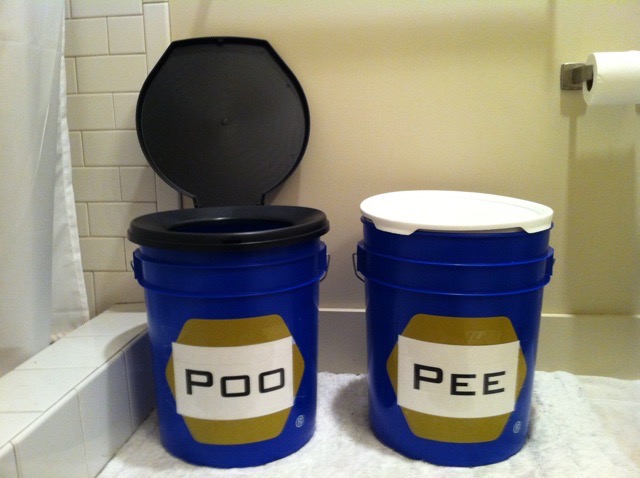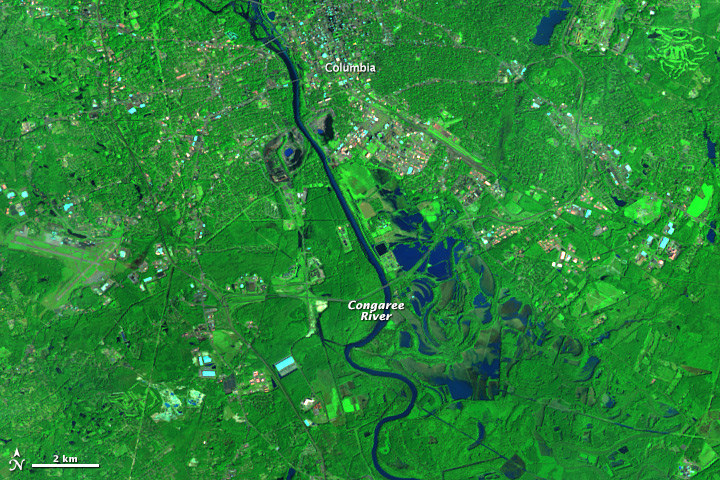
Emergency Sanitation Recommendations for Hurricane Florence
Hurricane Florence is upon us. She is predicted to bring excessive rainfall (over 2 feet) and dangerous storm surge (up to 9-12 feet) to North and South Carolina. While some are rejoicing that wind speeds have been downgraded, NWS continues to predict life-threatening storm surge and unprecedented rainfall. As an organization focused on safe sanitation in North America, PHLUSH is concerned about storm impacts on sanitation systems and public health.
How do hurricanes compromise sanitation systems? The National Weather Service has warned us that devastating flooding will occur with Hurricane Florence as she stalls over the Carolinas. It will be in the range of rainfall that overtook Houston last year with Hurricane Harvey. These kinds of disasters impact water and wastewater systems (treatment plants, electric pumps, septic systems) leaving many residents without access to clean water and flushable toilets for prolonged periods of time. Standing water is often contaminated with fecal matter after massive flooding, and this can make anyone in contact with that water very sick.
 How do you build a safe emergency toilet? PHLUSH advocates the Twin Bucket Emergency Toilet system. Separation of pee and poo is key to protecting yourself from unnecessary illnesses during emergencies. Pee is much more voluminous than poo but also not a major health concern. Your poop is another story. Separating urine means that you drastically reduce the volume of harmful material and smell. Nitrogen-rich pee mixed with the pathogen-rich poo is what creates most of the odor. Depending on your household size, multiple buckets or additional large containers will probably be needed.
How do you build a safe emergency toilet? PHLUSH advocates the Twin Bucket Emergency Toilet system. Separation of pee and poo is key to protecting yourself from unnecessary illnesses during emergencies. Pee is much more voluminous than poo but also not a major health concern. Your poop is another story. Separating urine means that you drastically reduce the volume of harmful material and smell. Nitrogen-rich pee mixed with the pathogen-rich poo is what creates most of the odor. Depending on your household size, multiple buckets or additional large containers will probably be needed.
 What are shortcomings of current emergency sanitation guidance? Most governmental agencies simply ask you to prepare with trash bags, twist ties, and bleach. These supplies insufficient. Moreover, they are dangerous if human waste in garbage bags becomes mixed with solid waste. Gaps in information from governmental agencies is related to enduring stigmas associated with talking about essential human needs and the management of human excreta following floods and earthquakes.
What has PHLUSH contributed? Following the March 2011 earthquake that disabled sewer and water systems in Christchurch, New Zealand, residents there successfully adopted the twin-bucket toilet. With research and materials development support from PHLUSH, the Portland (Oregon) Bureau of Emergency Management adopted the Twin Bucket Emergency Toilet in fall of 2011 and has since developed more comprehensive instructions. Our simple instructions for separating and containing urine and feces appear in materials prepared by the City of Portland, the City of Beaverton, the Portland Metropolitan region, Washington State communities of Jefferson County, Clallam County and Marrowstone Island, PREP Oregon, Loma Linda University, Oregon Health and Sciences University, among others. More detailed instructions are in the Emergency Toilet Guidebook produced recently by Oregon emergency managers and in The Sewer Catastrophe Companion: Dry Toilets for Wet Disasters.
Now we want to get the word out to East Coasters. As tropical storm force winds approach the coast Thursday morning, there is still time to prepare for toilet needs.
Questions? Please write them below and we’ll answer them.
What are shortcomings of current emergency sanitation guidance? Most governmental agencies simply ask you to prepare with trash bags, twist ties, and bleach. These supplies insufficient. Moreover, they are dangerous if human waste in garbage bags becomes mixed with solid waste. Gaps in information from governmental agencies is related to enduring stigmas associated with talking about essential human needs and the management of human excreta following floods and earthquakes.
What has PHLUSH contributed? Following the March 2011 earthquake that disabled sewer and water systems in Christchurch, New Zealand, residents there successfully adopted the twin-bucket toilet. With research and materials development support from PHLUSH, the Portland (Oregon) Bureau of Emergency Management adopted the Twin Bucket Emergency Toilet in fall of 2011 and has since developed more comprehensive instructions. Our simple instructions for separating and containing urine and feces appear in materials prepared by the City of Portland, the City of Beaverton, the Portland Metropolitan region, Washington State communities of Jefferson County, Clallam County and Marrowstone Island, PREP Oregon, Loma Linda University, Oregon Health and Sciences University, among others. More detailed instructions are in the Emergency Toilet Guidebook produced recently by Oregon emergency managers and in The Sewer Catastrophe Companion: Dry Toilets for Wet Disasters.
Now we want to get the word out to East Coasters. As tropical storm force winds approach the coast Thursday morning, there is still time to prepare for toilet needs.
Questions? Please write them below and we’ll answer them.

This Twin Bucket Emergency Toilet separates and contains urine and feces when water borne systems are disabled.
- Gather your supplies:
- Two five gallon buckets. More if possible.
- Toilet seat. Adapt a regular one, buy a camping toilet seat, or use cheap pipe insulation or a pool noodle.
- Carbon based material – sawdust, shredded paper, bark chips, mulch, dry leaves, grass clippings, peat moss, coir fiber.
- Mark the twin buckets “PEE” and “POO”
- Put the buckets in a private space with the carbon materials beside them.
- Decide which bucket you need to use. The seat can be moved between them.
- Try not to mix the pee and poo. The pee is the component that produces the bad smell when the two mix. The poo contains pathogens.
- After using the pee bucket, you can put the toilet paper in the poo bucket. Then remove the toilet seat and cover with a lid that closes well.
- After using the poo bucket and putting the toilet paper in the same bucket, sprinkle as much carbon material is needed to cover the surface of the poo. This reduces the smell and keeps flies away. Cover with toilet seat or a cloth or screen that lets the bucket breathe but doesn’t invite pests.

Flooding near Columbia, South Carolina in October 2015. (By NASA’s Earth Observatory CC BY 2.0 via Wikimedia Commons)
